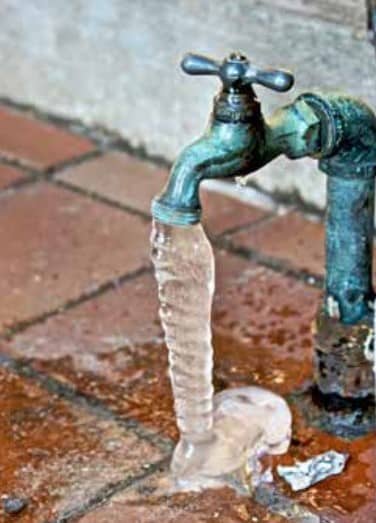Frozen pipes not only mean the inconvenient lack of water, they can also burst, causing expensive repair problems. Homeowners are often understandably frantic to get water pipes running again. But thawing pipes improperly can lead to more problems.
Use the right method for thawing
A little heat on the right pipe could get that water flowing. But a flame on the pipe is a very bad idea.
According to fire experts, flames under the house, even when directed at pipes, are a common cause of fire. The open flame from a heater, especially a propane salamander, can ignite insulation or flooring materials under a house.
Excessive heat on metal piping can cause water to boil, causing the pipe to burst. If you know where the pipes are frozen, first open the faucets and then apply heat with a hair dryer or electric heating pad.
Prepare ahead
If you know your pipes are prone to freezing, take some simple steps ahead of cold weather. First, prepare an emergency water supply. Partially fill a bathtub with water when very cold temperatures are predicted. This can provide water for pets, cleaning, or bathing. It will also give you some breathing room so you can take your time unfreezing pipes.
Next, keep the faucets open to a drip. This will help prevent pipes from freezing. Open your cabinet doors in the kitchen and bathroom to allow warm room air to circulate.
Prevent frozen pipes
One of the best ways to prevent frozen pipes is with heat tape or heat cable. These low-heat products usually can be plugged in at the beginning of the season and left until Spring.
Disconnect outdoor hoses and close valves supplying outdoor faucets.
If the problem with frozen pipes is persistent every winter season, consider relocating exposed pipes. Although this is a major project, it is worth the temporary hassle and expense to prevent future problems.
Insulation in attics, basements and crawl spaces will help prevent frozen pipes, too. Just make sure that pipes are on the warm side of the insulation. If pipes are on the cold side of the insulation, they are more likely to freeze.
Article provided by Bluegreen Carpet & Tile Cleaning in Waukesha
